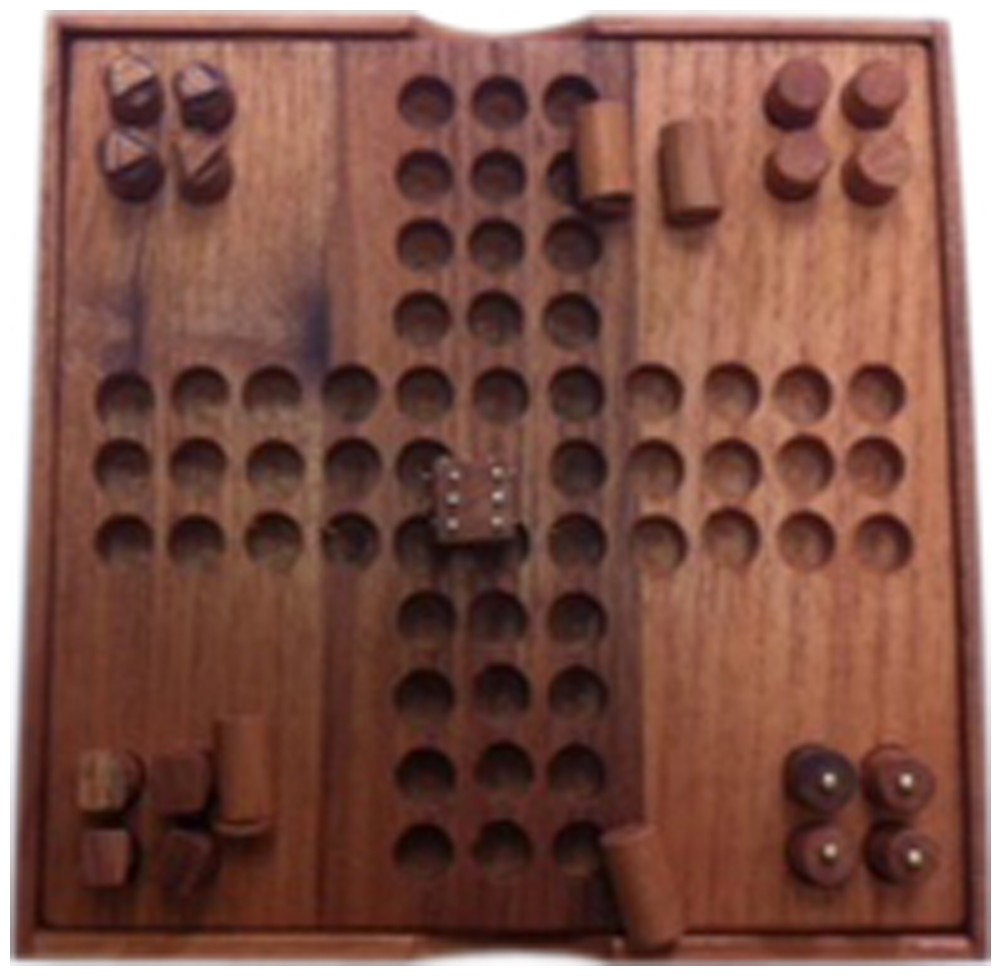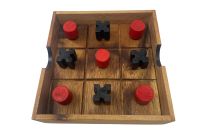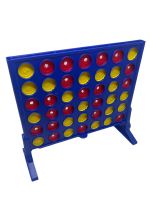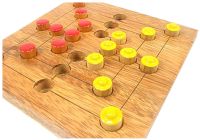
Parcheesi (Tactile)
Product Features
- Also known as ludo or parchisi.
- A classic, multi-player cross-and-circle game.
- Uses a square playing board with holes that make up a cross or X shape.
- A great game for blind and sighted players.
- Wooden game-board is a full 6 inches square .
- Board features indented holes which the pegs fit snuggly into.
- Each color of playing piece has a different tactile shape on top.
- Game is self-contained, with a folding design to keep everything together.
- Package Weight: about 9.5 ounces.
Product Description
Also known in different parts of the world as Ludo or Parchisi, Parcheesi is the classic cross-and-circle game that's been played in India since the 500's, in the U.K. since the 1800's, and in the States for almost a century! It employs a square playing board with holes that make up a cross or X shape. The game can be played by two, three, or four players, and involves each player desperately trying to get one of his or her four playing pieces into the very center hole on the board (known as Home). You roll one or two dice to determine how many squares you're allowed to move, and from there it's up to your logic and strategic calculations to determine which piece you should choose to move - and in what direction!Naturally, this adapted tactile game is entirely playable by blind and sighted players alike. The six-inch square wooden game-board features indented holes which the pegs fit snuggly into. Each color of playing piece also has a different tactile shape on top (flat, round bump, square, or triangle) so that everybody will know whose pieces are whose. And the entire set folds to hold the board and all its pieces together when not in use.
Go ahead ... Try your hand at what's often subtitled "The Royal Game of India" - and one that used to be played with real people, not just pegs. The allure and draw of the game hasn't changed over all these 1,500 years - it's just gotten a little friendlier, that's all!
Game comes with one tactile dice.
How to Play Parcheesi
Directions courtesy of Future Aids, The Braille Superstore.
The object of the game is to be the first player to move four pawns from START to HOME.
To begin, each player selects one set of pawns of the same color and places four of them on that color's starting space. Players should sit around the board so that their entering space is at their right hand.
Entering a Pawn. On each turn, a player must roll both dice. A FIVE must be rolled in order to enter a pawn onto the player's Entering Space. The FIVE may be on one dice, or a combination of the two dice totaling FIVE. If a player does not roll a FIVE he may not move, and his turn ends.
A player must enter a pawn for every FIVE rolled. If a double FIVE is rolled, he must enter two pawns. If a player has unentered pawns and his entering space is occupied by one of his own pawns and he rolls a double 5, he must forfeit one of the moves.
Moves after a player's pawn has been Entered. If a FIVE is rolled, with a different number on the other dice, then one pawn is entered with the FIVE and the other number is used to move any entered pawn along the path. A player may not have more than two of his pawns resting on the same space, however. If a player is unable to use both counts of the dice, the count of one die may be used and the other ignored.
Doublets. AFTER ALL OF HIS FOUR PAWNS HAVE BEEN ENTERED, a player rolling doublets (matching dice) may also count the numbers directly opposite both dice (which always totals 14). For example: if a player rolls double 6, he may also use the double 1 on the opposite side of these dice. In any roll of doublets, the entire count of 14 must be taken or the turn is forfeited.
Doublets entitle a player to another roll. If the second roll is doublets, the player again takes his count of 14 and is entitled to a third roll. If however, the third roll is doublets, he must take off the pawn nearest HOME (this pertains to any pawn on the red HOME PATH as well), return it to his starting space and enter it again in the usual manner. The last play is lost and he is not entitled to another roll until his next turn.
Capturing. If a player's pawn comes to rest, BY EXACT COUNT, on a space occupied by an opponent's pawn, the player has captured the opponent's pawn. When an opponent's pawn is captured, it is sent back to its starting space and must be re-entered according to the rules. After a player makes a capture, he may continue his pawn the number of spaces matching the count on the other die. He is also given a bonus of 20 spaces, which must be taken by any one of his four pawns but not divided among them. If the entire bonus of 20 spaces cannot be used by one pawn, it is forfeited. Remember, a pawn cannot be captured on his HOME PATH as no opponent may enter another player's HOME PATH. An opponent's pawn cannot be captured on a space in which there is a small circle (these spaces are called "Safety Spaces") except when it rests on the Entering Space of another player. In this case, if a player has an opportunity to enter a pawn, he may do so, capturing the opponent's pawn and thereby scoring 20 bonus spaces. A single pawn resting on a Safety Space may be passed by any other pawn.
Blockades. When two pawns of the same color rest on the same plain or Safety Space it is called a BLOCKADE and may not be passed by any player, even though made up of his own pawns. A BLOCKADE may be held by a player as long as he can move another pawn. It must be broken, however, if the full number rolled cannot be completed otherwise. Two pawns (or a BLOCKADE) may not be moved any number of spaces together. In breaking the BLOCKADE, the pawns must move forward singly and rest on different spaces at the end of the play. If a BLOCKADE occupies the Entering Space of an opponent, it prevents the player from entering his pawn. While there is no rule governing the breaking of a BLOCKADE, It is not in the best interest of the game to hold one too long.
Home. A pawn may enter HOME only on an exact count. For each pawn moved to HOME, a bonus of 10 spaces is given to the player. This bonus cannot be divided, but must be taken by any one pawn. If the entire bonus of 10 spaces cannot be used by one pawn, it is forfeited.
The Winner. The first player to move all his pawns HOME wins the game.









